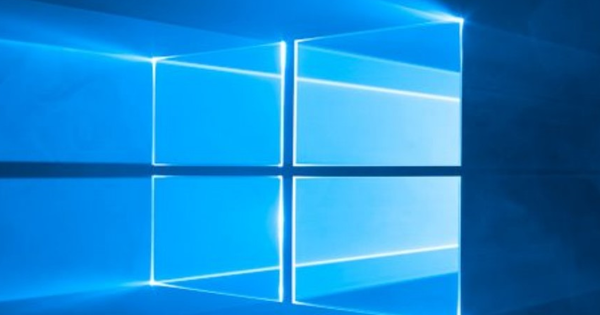Asus has several laptops with almost the same name, there are a few ZenBook 14 laptops. The ZenBook 14 UM425IA is a laptop that is very similar to the also reviewed ZenBook 14 UX425JA with one important difference: this laptop contains an AMD processor. How does that work in practice?
Asus ZenBook 14 UM425IA-AM005T
Price € 799,-Processor AMD Ryzen 5 4500U
Memory 8GB
Screen 14-inch IPS (1920x1080p)
Storage 512GB SSD (NVMe 3.0 x2 M.2)
Dimensions 31.9 x 21 x 1.43 cm
Weight 1.22 kilos
Battery 67 Wh
Connections 2x USB-C (USB 3.2 Gen 2), USB 3.2 (Gen 1), HDMI, Micro SD card reader
wireless Wi-Fi 6, bluetooth 5
Website www.asus.com 10 Score 100
- Pros
- Impressive performance
- USB-C Gen2 Ports
- Matte screen
- Good battery life
- Negatives
- No 3.5mm audio output
- Housing creaks a bit
In appearance, the ZenBook 14 UM425IA appears to be an identical copy of the ZenBook 14 UX425JA. Still, the chassis is strangely not completely identical: the laptop is 0.4 mm higher and 2 mm deeper. However, you only see that if you place it directly next to the UX425. He is also just a few grams heavier. In any case, there is nothing wrong with this appearance, this is a beautiful laptop to see that is also solidly built. Just like its Intel counterpart, this laptop does crack a bit.
Asus has equipped this UM425IA with the AMD Ryzen 5 4500U, a processor with 6 cores. This is combined with 8 GB of RAM that is not expandable. The ssd is a nvme copy of Kingston with 512 GB capacity.


Connections
You get a useful selection of connections with this laptop. Unlike its Intel counterpart, Thunderbolt 3 is missing, but it's not a big deal. The two USB-C ports retain the best features of Thunderbolt 3: charging, video output and the faster USB 3.2 Gen2 speed. For almost everyone, these USB-c ports are therefore equivalent to the Thunderbolt3 ports on the UX425. Specific Tunderbolt equipment is pricey, while thanks to the Gen2 speed you can quickly use external SSDs. Something this laptop can't do is use Thunderbolt equipment, such as an external graphics card.
The USB-a port supports the gen1 speed, or normal USB 3.0. the wireless part is provided by an Intel Wifi6 card, the same network card that is now on almost every new laptop. Because the design is almost the same as the UX425, this laptop is also not equipped with a sound output. Unlike its Intel counterpart, however, the USB-C dongle for the sound output is missing. The USB network adapter and sleeve are also not included in the package. Asus clearly puts this UM425 lower in the market than the UX425.


To work
Like its Intel counterpart, the UM425 features a 14-inch screen with a resolution of 1920 x 1080 pixels. It is a different panel that is less bright. However, the screen is not bad, the color reproduction and viewing angles are still good. Something that only stands out when you place this UM425 right next to the UX425 is that the keys have a different shade. The keys on the UX425 are dark gray while the keys on at least the tested UM425 are rather black. Perhaps there are two suppliers for the keys. Ultimately, of course, the color of the keys doesn't matter that much, the keyboard looks identical to that of the UX425 and it taps pleasantly. The touchpad is also the same and equipped with Asus NumberPad, a virtual numeric keyboard. The webcam is equipped with facial recognition to log in to Windows. In terms of image quality, it is unfortunately nothing special.
Performance
Where this ZenBook 14 UM425IA really excels is the performance. The AMD Ryzen 5 4500U is a lot more powerful than the Intel Core i7-1065G from the UX425. This laptop scores 4913 points in PCMark, which is really a lot faster than the Intel variant. We also see a clear difference in 3DMark Time Spy: this laptop scores 981 with a cpu score of 4167 points, while the UX425 remains at 835 points with a cpu score of 2904. That the general 3DMark scores are closer to each other than you would expect based on the CPU partial scores, is due to the GPU partial scores. With 865 points for the integrated AMD Radeon on this UM425, it is higher than the 742 points achieved by the Intel Iris Plus, but it is certainly not a game monster. A GPU of this caliber is suitable for gaming in 720P.
The Kingston nvmessd with a storage capacity of 512 GB, with a read and write speed of 956.39 and 958.06 MB/s, has a slightly lower performance than the ssd in the UX425. But this is still fine and smaller SSDs always score less well anyway.
The ZenBook UM425 has the same 67WH battery as its Intel counterpart, and Asus reports the same battery life of up to 22 hours. In practice, however, the battery life is somewhat lower than with the Intel variant. With normal office work I got to about nine hours. In the Modern Office battery life benchmark of PCMark 10, this laptop scores 13 hours and 30 minutes. Less than the battery life I got with the UX425, but still more than enough for a laptop for normal use.
In summary, this laptop is really a lot more powerful than the more expensive ZenBook 14 UX425. It is therefore likely that Asus only sells this AMD variant in the Netherlands with 8 GB of ram and 512 GB of SSD, while the Intel variant with 16 GB of ram and 1 TB of SSD is sold. For example, for some purposes the Intel variant is more attractive. The Intel-based UX425JA is a great laptop by the way, but this UM425IA really offers an excellent price/performance ratio.
Conclusion
With the ZenBook UM425IA, Asus is launching an excellent laptop that combines high performance with a good price. The rest of the features are also fine, only the once again lack of a sound output is a disadvantage. This UM425IA keeps many of the good features of the Intel counterpart UX425JA, including a beautiful housing. and good battery life. Only the screen is a bit less, but still very good. For the 799 euros that this laptop costs, this is highly recommended if you have enough of 8 GB of ram.
It is therefore a pity that there is no choice in the Netherlands for a UM425 version with 16 GB of ram and a somewhat larger SSD, because this AMD platform is currently an excellent choice that is really putting Intel under pressure.

